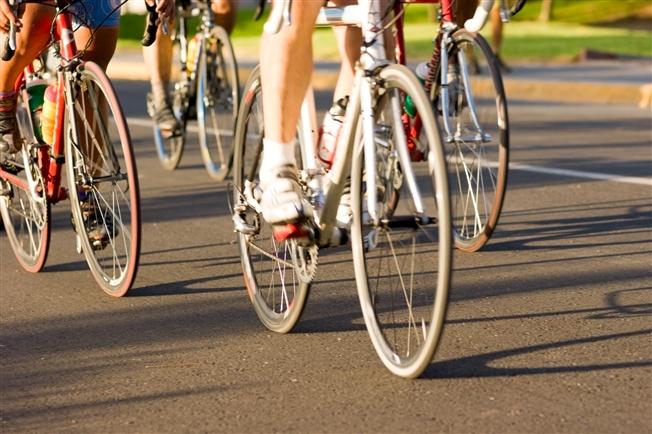How to treat and prevent biking injuries

Christopher Dodson, MD, loves a good spin workout himself. But the Bryn Mawr Hospital orthopaedic surgeon also sees his share of people who love spinning and biking, but end up with knee injuries, clavicle (collarbone) fractures, and other types of joint pain and injuries that may well have been prevented.
With spinning in particular, people don't expect stationary biking to cause knee damage because there's less joint impact than riding a bike on a hard surface. But in fact, the repetitive activity of spinning uses the same muscle groups as biking. Any kind of biking—and spinning in particular—causes quadriceps tightness, stiffness and fatigue, which can then lead to knee pain.
"The quad attaches to the kneecap so if you don't stretch sufficiently, the tightness of the quad muscle will pull on the kneecap," Dr. Dodson explains. "This causes the kneecap to sit where it's not supposed to sit. As a result of that ‘pull,' the cartilage underneath gets inflamed." The solution to knee pain from biking is to do quad stretches as the muscles recover or work different muscle groups with other types of exercise, rather than doing the same repetitive motion of cycling.
Training mistakes that lead to biking injuries
Another spinning and biking mistake Dr. Dodson sees is biking at extremes. "Sometimes people train or work out at drastically different loads," he says. "They might do no spin class for two days then go and spin as hard as they can. Or they might do nothing then ride for 20 miles. These peaks and valleys of strain tend to cause problems in your body. The body would prefer you do 10 miles consistently." It's better to train doing various exercises (not just biking) and at consistent loads rather than trying to make up for inactivity by powering it out.
If you have an existing knee injury, and depending on the extent of that injury, strive to do three different types of exercise every week: 1) aerobic, things like running, swimming and biking to get your heart rate up; 2) mobility, including stretching and flexibility training; and 3) strengthening, such as weight lifting to strengthen your quadriceps. "Then you cover all your bases," adds Dr. Dodson. "Most injuries come down to not having done these three things, which can really help preserve the knee and prevent re-injury."
Dr. Dodson also cautions bike riders to be safe on the roads and avoid car traffic areas as much as possible. One of the most common biking injuries he sees is a broken clavicle, usually from having been thrown off a bike by an automobile. While car-related biking injuries present the added risk of head trauma and more significant injuries, a broken clavicle frequently requires surgery and approximately three months of recovery time.
How to treat knee pain from biking
- If you have pain from a traumatic episode, such as you fell and twisted your knee and there's swelling or you're limping, call a doctor for an immediate evaluation.
- If you have pain that persists three to four weeks after activity, you should also consult a doctor.
- If you have pain when squatting or sleeping (pain that wakes you up), but you don't remember any specific trauma, there may have been some overuse episode that is causing your pain. Be sure to see a doctor anyway.
Join us on Sunday, August 12, 2018, for the second annual Main Line Bike Race sponsored by Main Line Health and benefiting Narberth Ambulance and its partnership with Lankenau Medical Center.
Main Line Health serves patients at hospitals and health centers throughout the western suburbs of Philadelphia. To schedule an appointment with a specialist at Main Line Health, call 1.866.CALL.MLH (225.5654).
 Content you want, delivered to your inbox
Content you want, delivered to your inbox
Want to get the latest health and wellness articles delivered right to your inbox?
Subscribe to the Well Ahead Newsletter.
